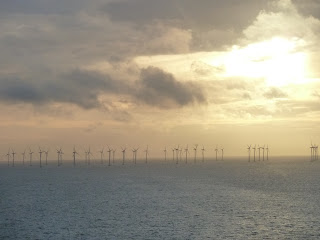Malmö,
despite being the third largest city in Sweden, does not seem to enjoy a
reputation on her own right.
Almost every traveller in the hostel I talked
to had either come from Copenhagen or was heading there
as the next destination. Everyone seemed to be making Malmö a short stop on their journey. The only two
exceptions were a Canadian-Swedish woman and a globetrotting Dutch truck driver
who were staying in the city for a longer time in search for jobs. Like my
fellow holidaymakers, I was brought to Malmö by Copenhagen. When I told somebody that I was
staying for three days I was given this response, “Why are you staying for so
long here?”
The Oresund
Bridge has made it more common for people to dwell in Malmö and work in Copenhagen. Lower living cost but also
lower pay level, this Swedish border city is always like a low-key little
brother to the prominent, international and expensive Danish capital.
 |
| The Turning Torso |
Perhaps because of a lack of a natural or historic landmark, Malmö felt so eager to build her own
icon that she decided to make one last decade. The city invited Spanish
architect Santiago Calatrava to build the 190-meter tall and 54-storeyed
residential block of Turning Torso. Just completed in 2005, it is now as the
tallest skyscraper in Scandinavia and is known as a (if not THE) landmark of
the city.
Maybe the border identity is the best signature of Scania (or
Skåne in
Swedish), a piece of
land repeatedly fought for between the Swedes and the Danes in history.
Cosmopolitan yet classic, clean, convenient
and peaceful, the city of Malmö in fact appealed to me on my very first day there. I believe that it
deserved more than what it was known.
 |
| Lilla Torg |
 |
| Night view from the Suellsbron bridge |
 |
| The Malmö Castle |
 |
| View of the Lillgrund wind farm along the Oresund Bridge |
No comments:
Post a Comment